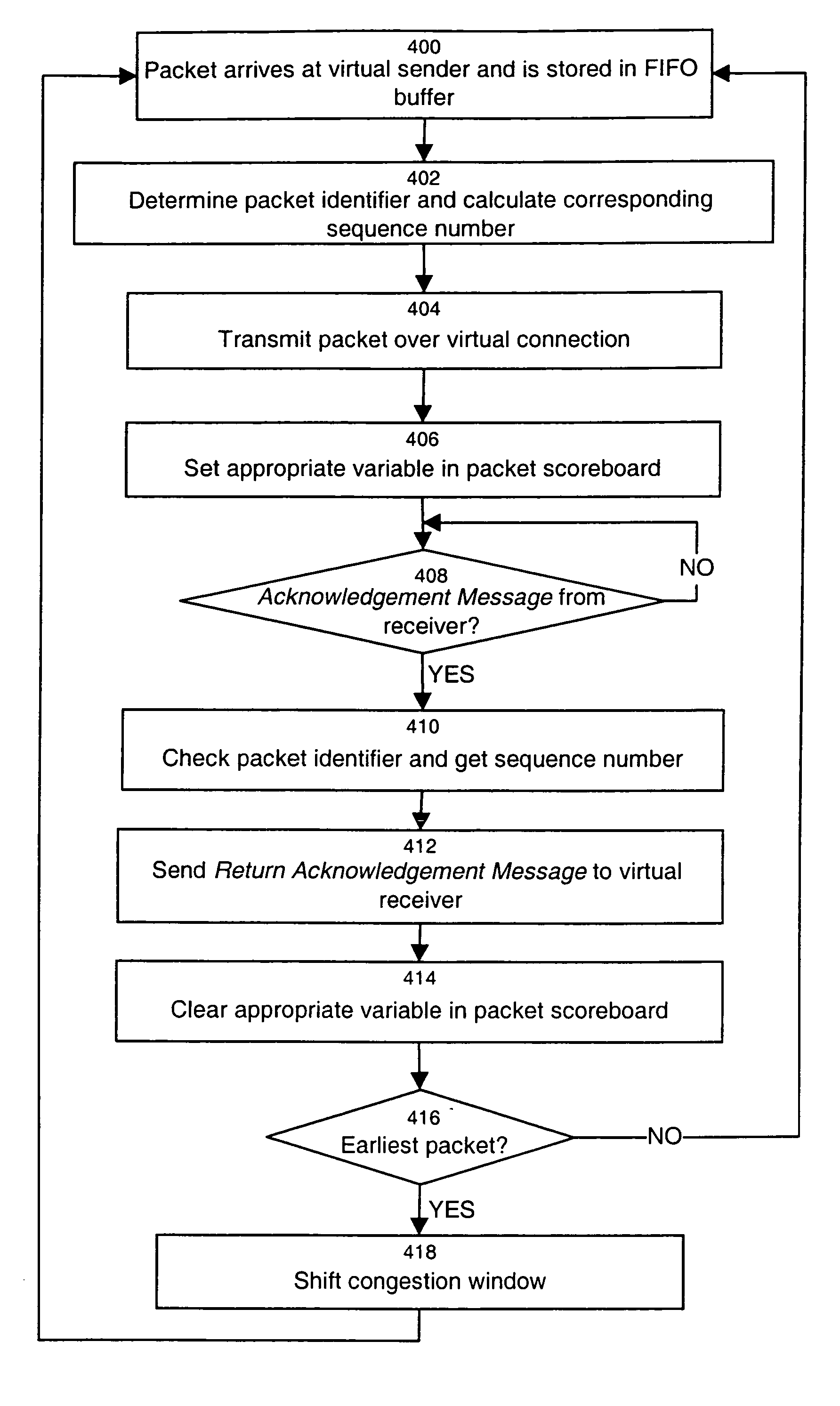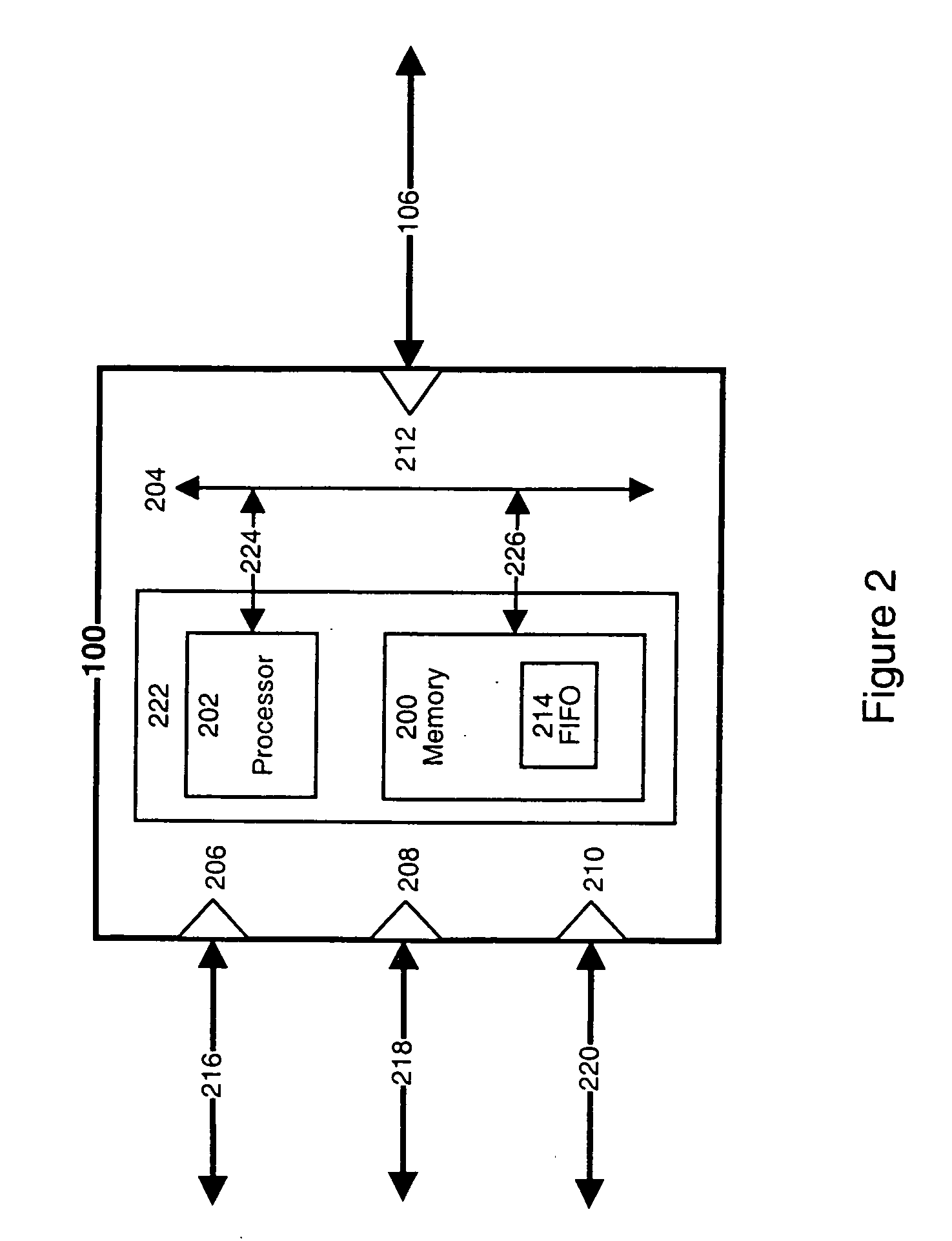Method and apparatus for bandwidth management of aggregate data flows
a technology of aggregate data flow and bandwidth management, applied in the field of digital data transmission, can solve the problems of inefficient bandwidth use of data packets, small headers envisaged for mpls, and control of tcp/ip flow connection
- Summary
- Abstract
- Description
- Claims
- Application Information
AI Technical Summary
Benefits of technology
Problems solved by technology
Method used
Image
Examples
Embodiment Construction
[0018] A conventional IP network implements bandwidth sharing among host machines using the Transport Control Protocol (TCP). Although data flow in the network can be bi-directional, it is usual to refer to the originator of a particular piece of data as the sender and the other end as the receiver. In TCP, the sender (sender host machine) constantly tests the network to see if more bandwidth is available and uses the loss of a packet determined by sequence numbers of TCP packets as an indication to decrease its rate. Any lost packets are sent again so that there is a reliable flow of traffic. The loss of too many packets can cause the TCP connection to enter the timed out state.
[0019] Each packet contains a sequence number, which increases according to the number of bytes transmitted. The receiver acknowledges packets using this numbering scheme and always acknowledges the latest packet received in correct sequence. It may acknowledge each packet individually or wait in order to r...
PUM
 Login to View More
Login to View More Abstract
Description
Claims
Application Information
 Login to View More
Login to View More - R&D
- Intellectual Property
- Life Sciences
- Materials
- Tech Scout
- Unparalleled Data Quality
- Higher Quality Content
- 60% Fewer Hallucinations
Browse by: Latest US Patents, China's latest patents, Technical Efficacy Thesaurus, Application Domain, Technology Topic, Popular Technical Reports.
© 2025 PatSnap. All rights reserved.Legal|Privacy policy|Modern Slavery Act Transparency Statement|Sitemap|About US| Contact US: help@patsnap.com



